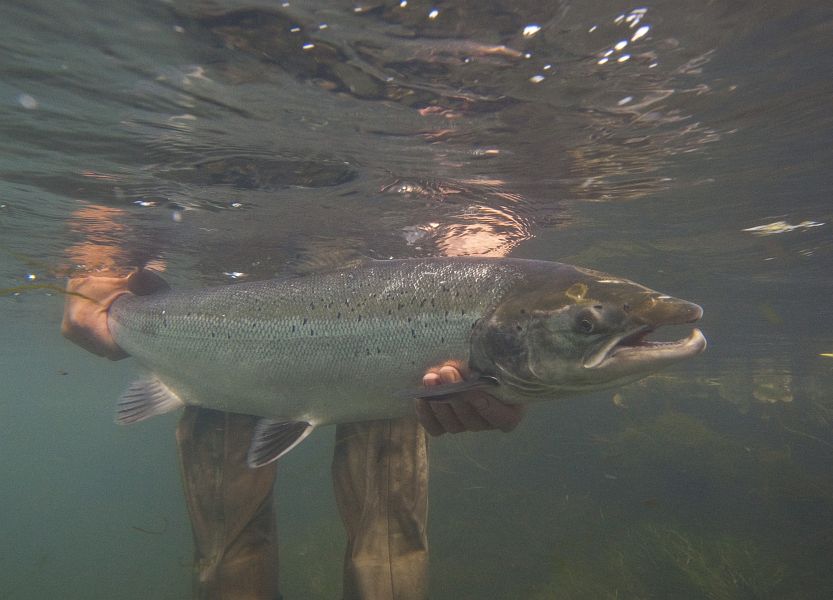CHALKSTREAMS IN HAMPSHIRE AND SALMON FISHING IN ICELAND
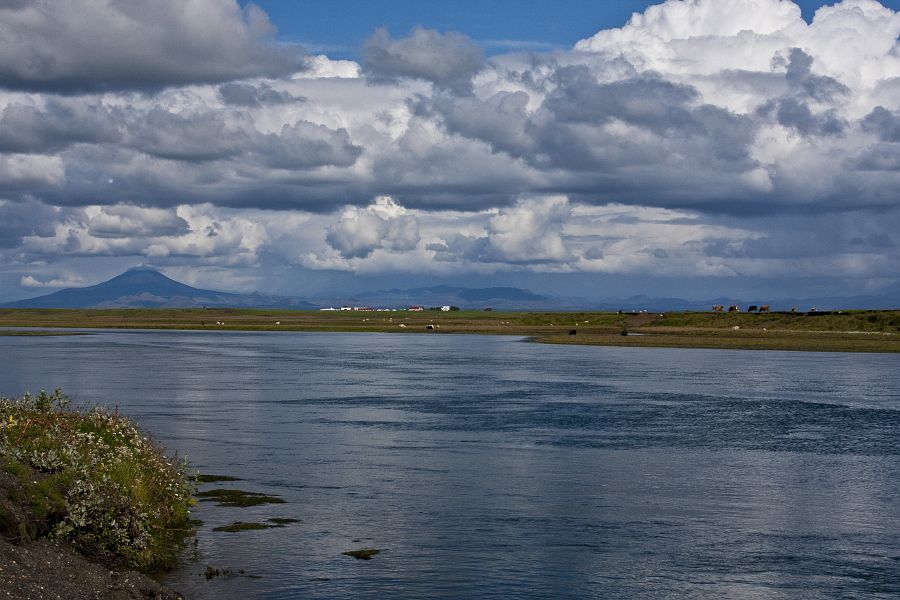
West Ranga River - an Icelandic landscape
I just got back from a fly fishing trip that was a journey of delight. I visited Iceland for the first time, caught my first Atlantic salmon, shared a full day on the river Test with my son Robert, had a day on a private beat of the upper Test owned by former world champion racing driver Jody Scheckter and revisited the upper Itchen. As they say, it’s a tough life but someone has to do it.
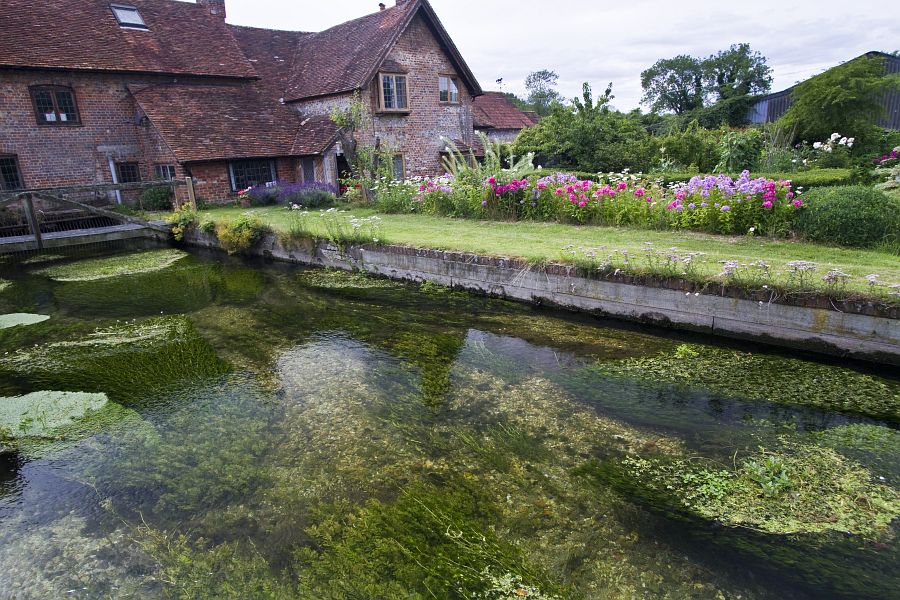
Roger and Victoria Harrison's farm on the Upper Itchen - does it get better than this?
I need to put this trip into perspective though, because it’s not the sort of trip I would ordinarily do. I simply couldn’t afford to. And unless I said that right up front I might end up sounding unintentionally blasé in this piece. I just happened to be the fortunate guest of a London-based friend, Robin Renwick, who has fished with me in South Africa on and off for the last 20 years. He generously sponsored the Icelandic leg and the two chalkstream days I had. All I had to do was get myself to London and pay for my accommodation. And on Jody Schekter’s water on the upper Test, I was the guest of another London-based friend, Frederick Mostert, son of a famous South African judge, the late Anton Mostert who was also a good fishing pal of mine.
The Test on Kimbridge
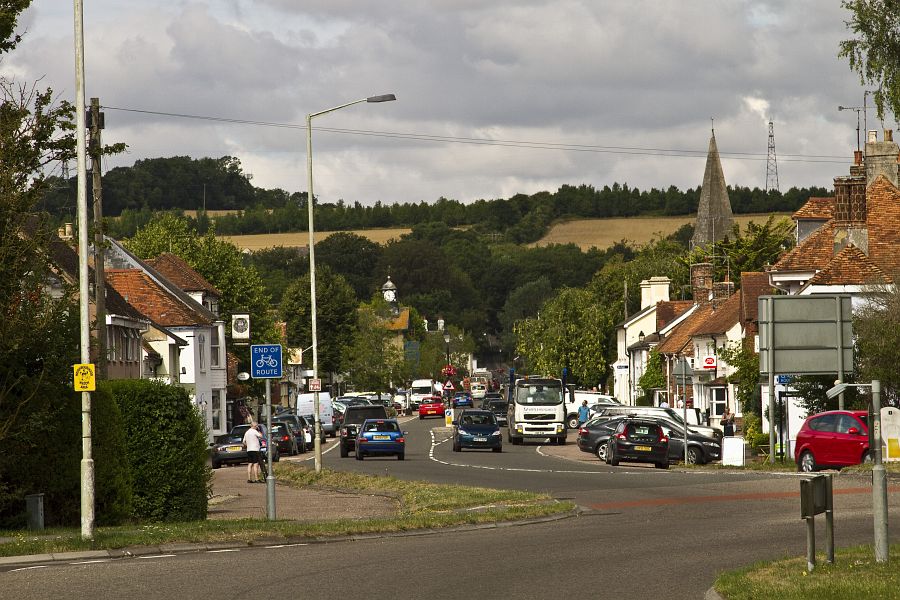
The village of Stockbridge - steeped in fly fishing history
I fished Kimbridge, a section of the Test outside Stockbridge, a village soaked in early fly fishing history. To make the day more memorable, my son Robert and his wife Tammy joined me. They now live in London. Robert is a naturally gifted fly fisher with a graceful left handed cast. They have a new found passion in photography and the natural beauty of the Test River valley kept their cameras pretty busy.
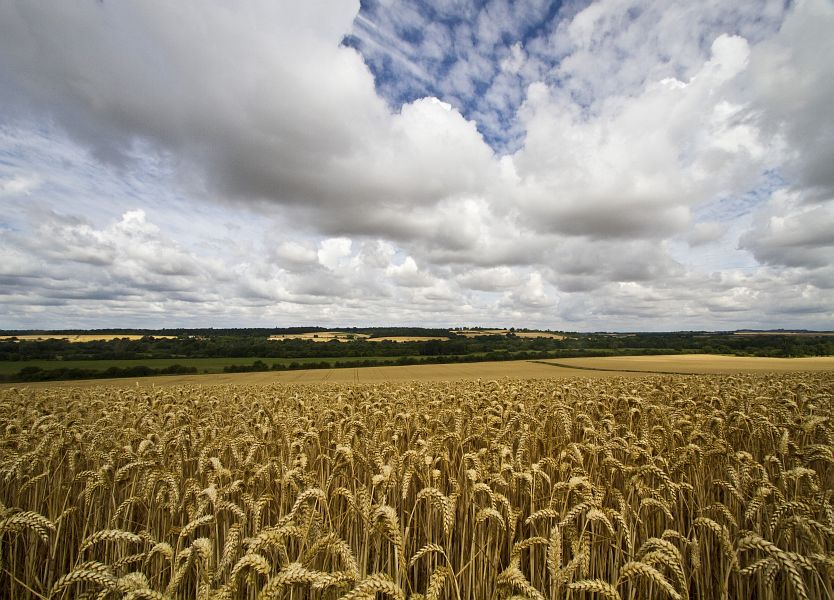
Test river valley landscape
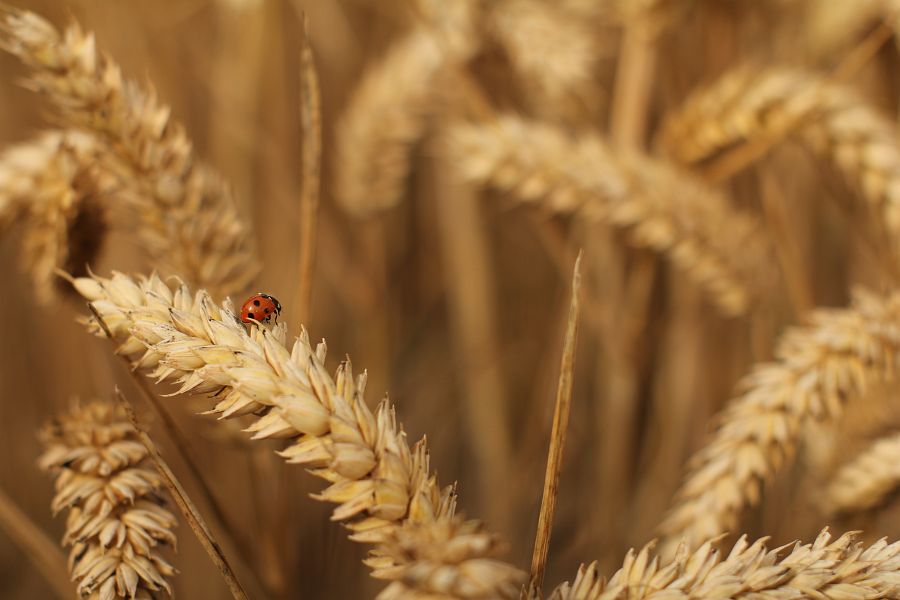
Tammy Sutcliffe photo
Kimbridge is a private estate with two rivers running through it, the Test and the Dun, as well as a few carriers, or side arms, with names like the Coldbrook and the New Stream. You can catch browns and rainbows here and occasionally a hybrid fish called the blue trout. The blue came about through selective breeding with very dark coloured rainbows that produced an attractive electric-blue coloured sub-species that grow faster and fight like tigers.
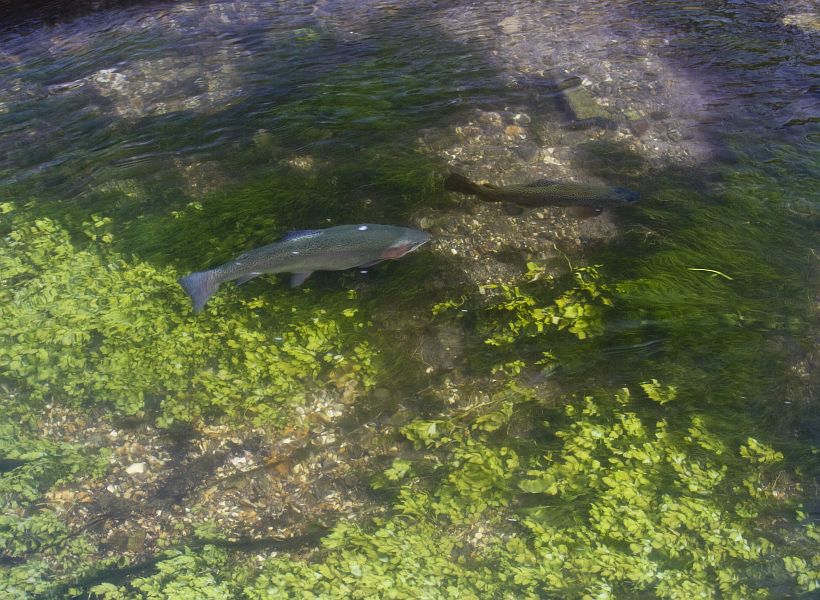
A rainbow lying alongside a brown - river Test
We had an early breakfast on the estate at Annie’s tea room before tackling up in the tastefully appointed ‘Granary’ where at the end of the day you can change out of your gear, take a shower, then fill in the details of your catch in the fishing logbook in comfort.
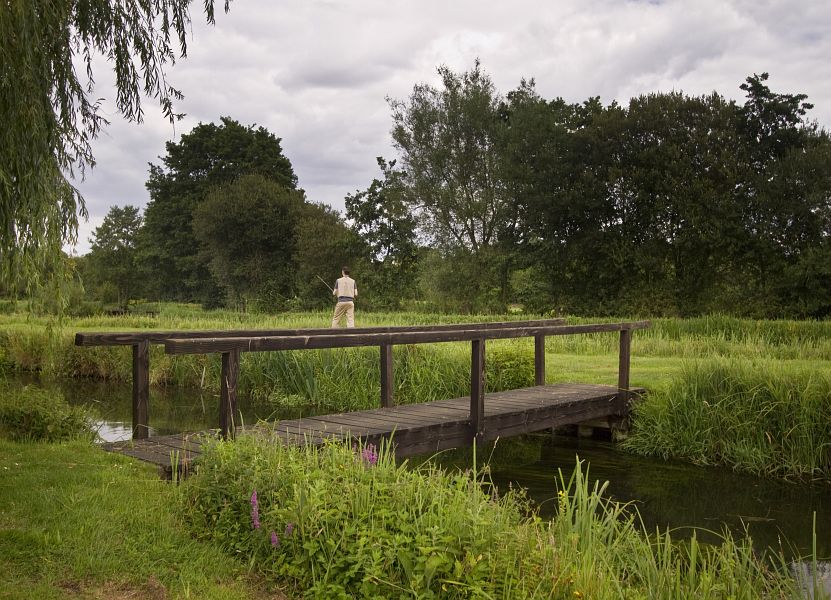
Robert on a Kimbridge beat - note the pretty carrier stream between him and the main river
The going was slow to begin with. The fish weren’t rising and drifts over a couple of browns with Klinkhamers and Elk Hair Caddis patterns produced nothing. Nymphs aren’t allowed on Kimbridge otherwise it was the sort of day I’d have reached for a Zak. I eventually gave Robert a size 12 Coq de Leon RAB and he rose and hooked four browns on it in quick time, including one around four pounds. But then there were crane flies about and I thought the RAB made a passable imitation of these delicate, long-legged insects.
Later that afternoon Robert hooked a monster blue trout on a Klinkhamer in the Dun that seemed tireless. He fought the fish for around twenty minutes before eventually landing a five and a half pound blue.
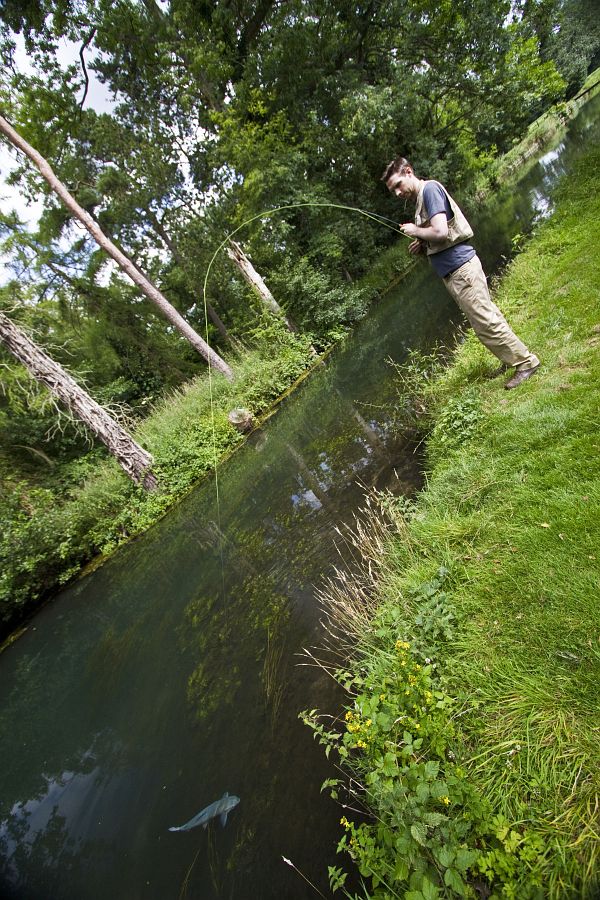
Rob playing his blue trout on the River Dun
This was a perfect day, made the more so because I was in the company of my children and able to share with them a fishing experience from heaven on one of the world’s prettiest and most prestigious chalkstream estates.
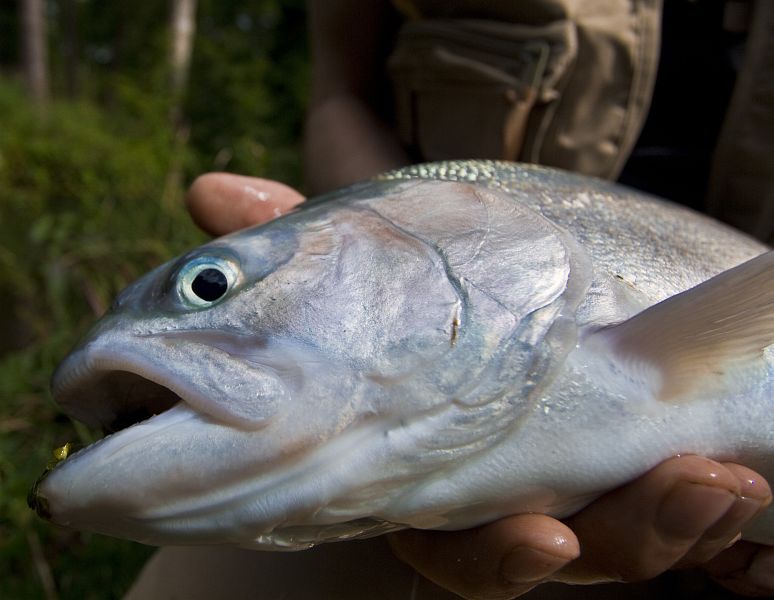
I found the colour of the eyes most unusual
The upper Itchen

Typical of the main Upper Itchen water (above and below)
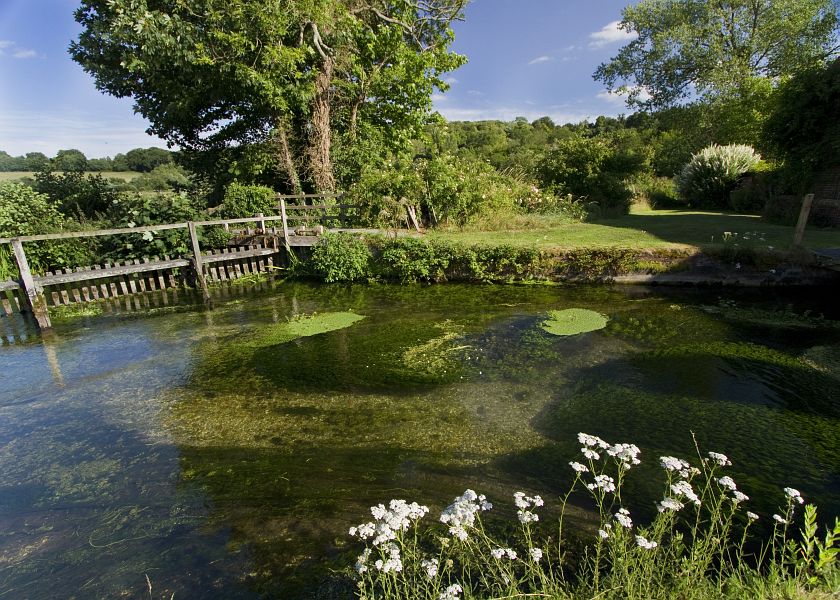
Does a trout stream get prettier than Roger Harrison’s section of this revered river, or more challenging? I doubt it. For my money this is the world’s ultimate destination for wild trout. There’s sight fishing for large browns (and greyling) in the main river and for smaller, but exquisitely beautiful, browns in the carrier streams. I got all my fish on a size 18 CdC parachute midge, a fly I tie with a single, natural grey CdC feather with the tip wrapped parachute style around an orange-coloured poly yarn post.

The CdC Midge. I also took a big greyling on the pattern
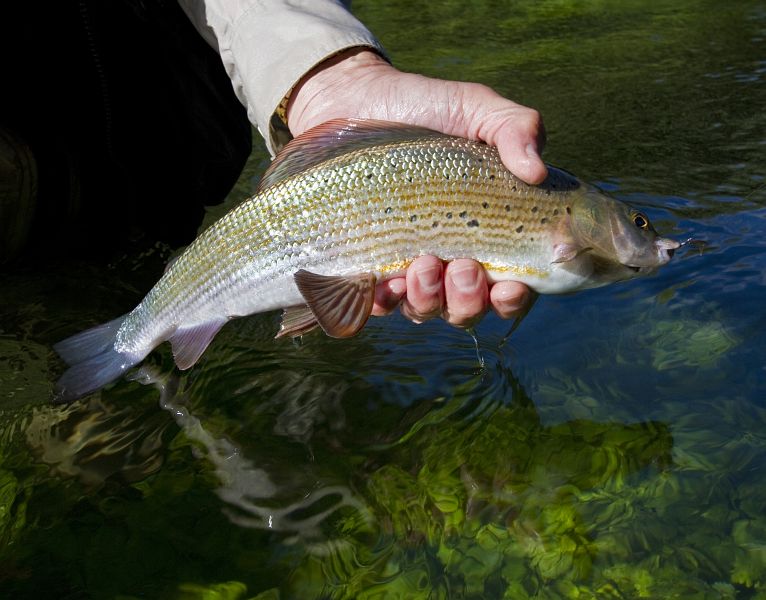
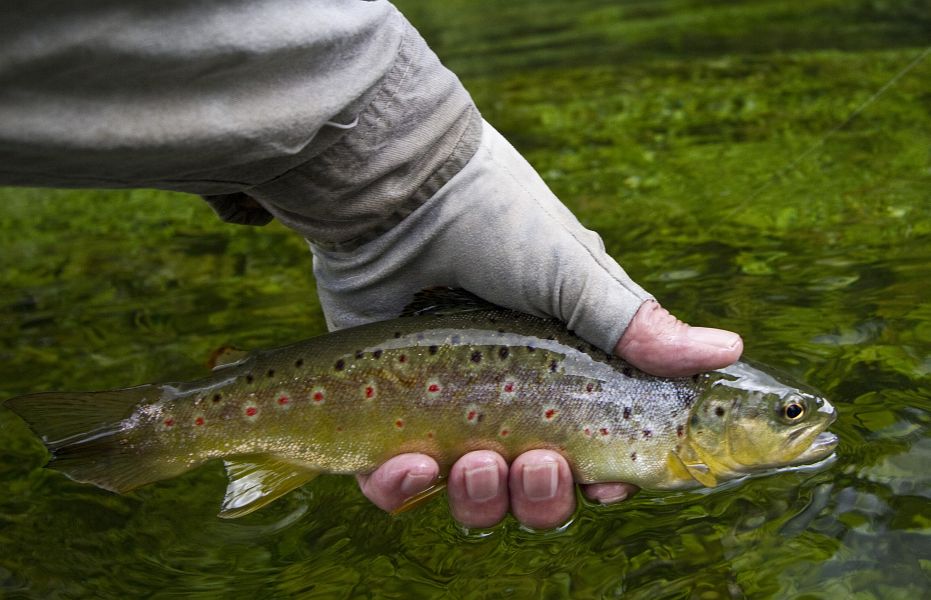
Above A brightly coloured Itchen brown from the smaller carrier stream
Below A typical main Itchen brown . Far bigger. Notice the difference in colour and the tiny CdC nymph!
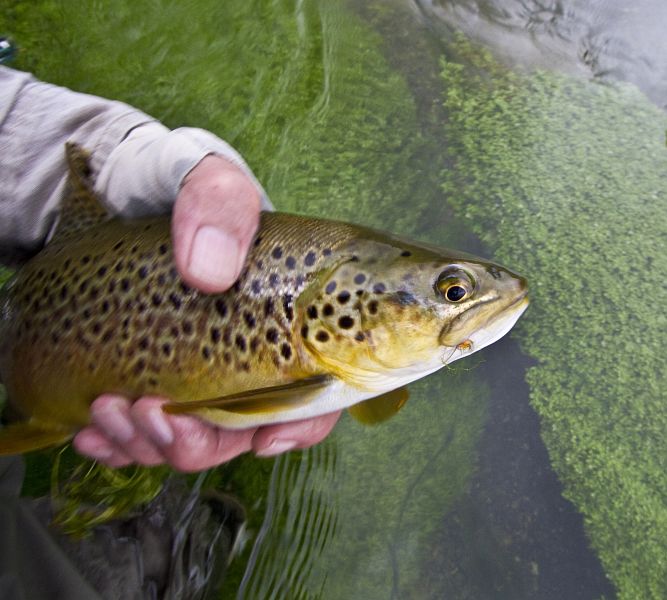
Lunch was a prawn and salmon mousse, followed by roast fillet on a bed of green salads and a delightful desert. After that I wondered upstream, sight fished browns lying in the clear gravel pockets between weed beds, must have taken a dozen fish, and ended up wondering what acts of great mercy I had pulled off in the previous life to deserve a day quite as exquisite as this.

A friend shows the bright dorsal fin on a greyling for my camera
The headwaters of the Test
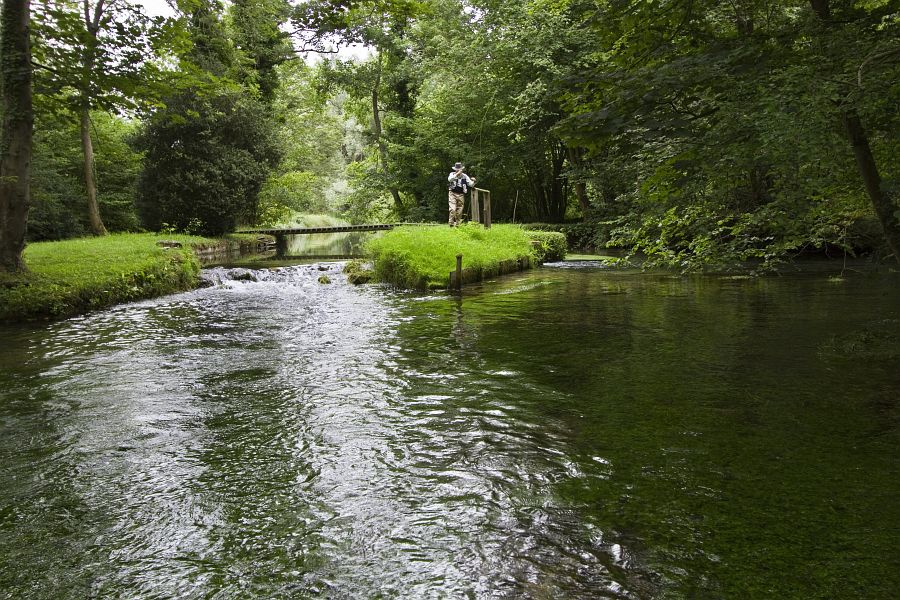
Frederick Mostert on the Upper Test
Frederick Mostert drove me down to Overton south west of London where Jody Scheckter has an organic farm called Laverstoke Park. Few people ever get to fish his section of the Test, but one of them is Frederick. The stream is small and very clear, a sort of miniature River Test, not unlike the Hampshire Bourne which is perhaps one of the most elegant and historic of all chalkstreams.
We kitted up in sunshine and strolled down the river spotting very spooky trout and greyling, some browns easily over 18 inches.
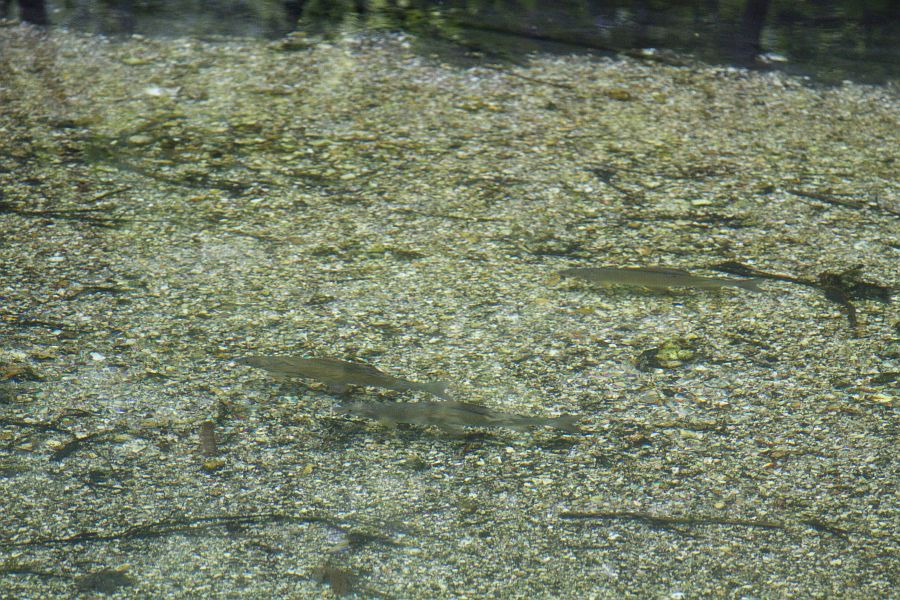

Pictures above are all of greyling. Notice the water clarity. If we took a sudden deep breath these fish spooked!
But then the weather changed; a wind got up and occasionally we had light rain. The fish were off the feed and besides a few tentative rises or those long, expectant ‘looks’ where the fish just lines up under the fly and does little more, we got nothing. But even if we didn’t hook a fish all day the fishing was charming for its own reasons. The charm lay in the fact that we were on the headwaters of the Test, a pristine section of chalkstream in a lovely part of England on a magnificent farm belonging to a remarkable South African.
We had one of the long, lazy lunches you can have on a stream bank when the fishing isn’t that hectic that you feel you have to eat fast so as not to miss any of it. It was a day that seemed to unwind very gradually, as if in a delightful slow motion. A chilled bottle of Chardonnay probably added a little to the slow, easy pace of things and if we had no fish, believe me we didn’t care. It was still every bit a great day’s fly fishing.
ICELAND

I had my first Atlantic salmon on my second throw into the Ranga River in south west Iceland. We were at the West Ranga Lodge operated by Laxa-A, Iceland’s largest sporting outfitters (www.lax-a.net/iceland/fishing-iceland/fishing-in-iceland.html ). We had landed at Reykjavik airport less than three hours before and were fishing bellow a waterfall on this majestic river.
Our guide was Rikardur Htalmard, or Rikki, a young Icelander with a great sense of humour and an even better sense of ‘fish’ and ‘fishing’. He was easily the best guide I have ever known and with his help Robin Renwick and I got into big salmon every day. In fact in four full days of fishing we never blanked once.
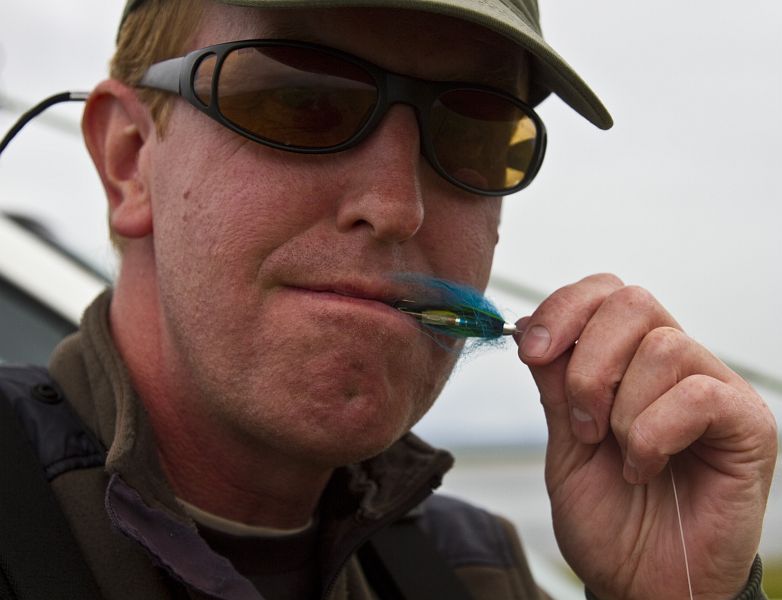
Rikki our guide
The lodge is a series of comfortable wooden cottages with a main mess that looks out over a sweep of the Ranga known as the Home Pool. There was a view of the famous volcano sitting in a range of high mountain country 30 kilometres away.

Icelandic landscapes are stark, wide, flat, treeless and tundra-like, the riverbanks laced with colourful wild flowers, the green meadows sprinkled with dandelions and bright yellow buttercups.
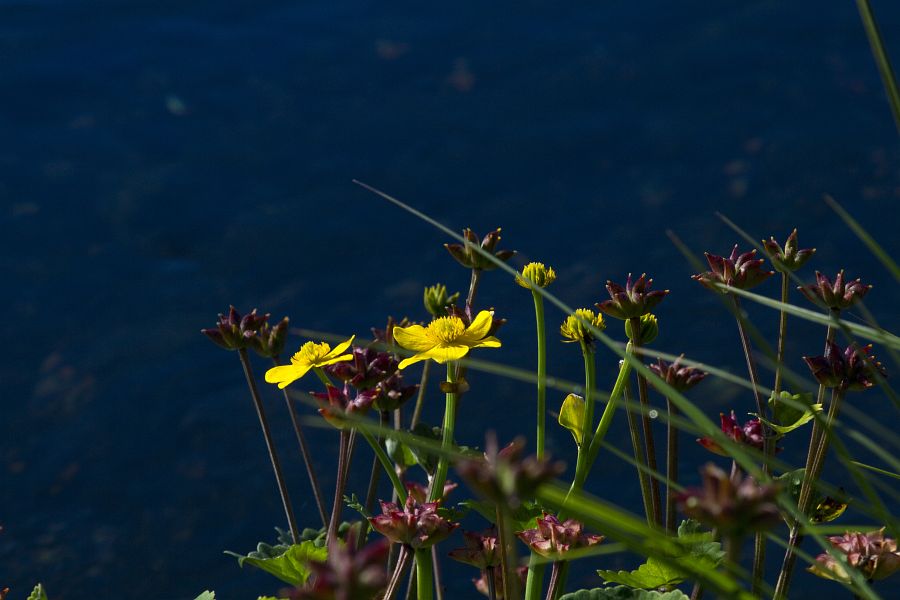
There was little wind but save for one day there were heavy, low lying clouds and occasional showers of rain. One morning the clouds vanished and the landscapes were suddenly transformed; sun filled, green and quite dramatic.
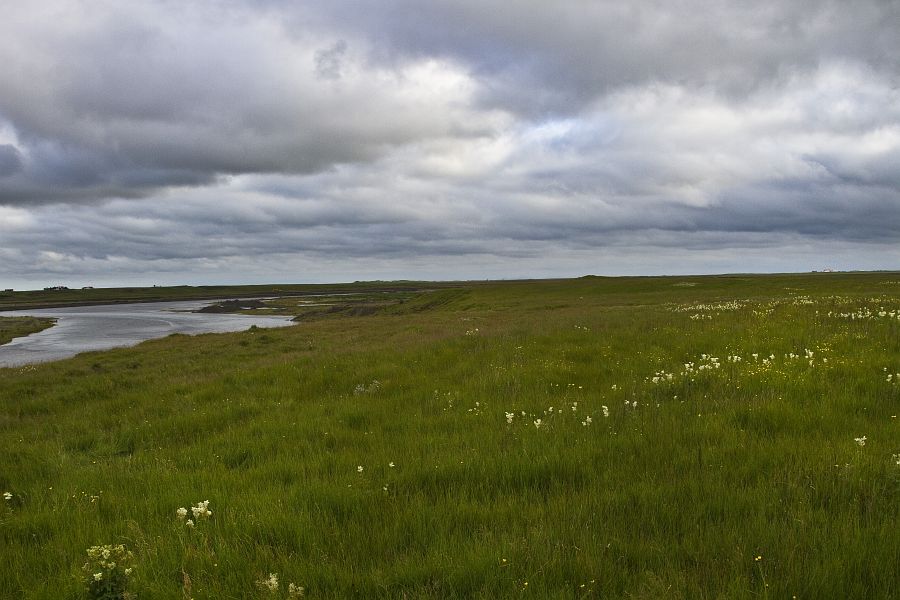
There is a time-honoured schedule to the fishing at this lodge. We began at 7.00 after breakfast going to one of the 10 beats on the river in Rikki’s Nissan truck, fly rods rigged and attached to the bonnet.
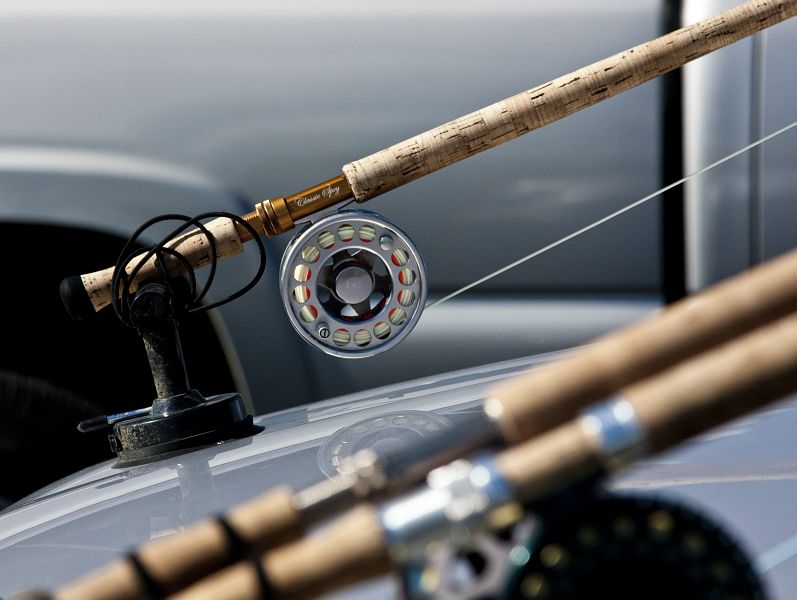
We’d fish the beat until 10.00, stop by the lodge again for a cup of heavily sugared, hot coffee and some biscuits and then you fish a different beat until 1.00. After lunch you take a nap until 3.00 when the guide picks you up for the next beat, which you fish until 5.00. From there you make for your final beat and fish until 9.00 p.m. – still in daylight – when you head back, hang up your gear, take a shower and join the other guests for dinner.


The weather was cold but not grim and with thermals under my Simms chest waders I never felt chilled, even after an hour or two wading in water around 6 degrees C.
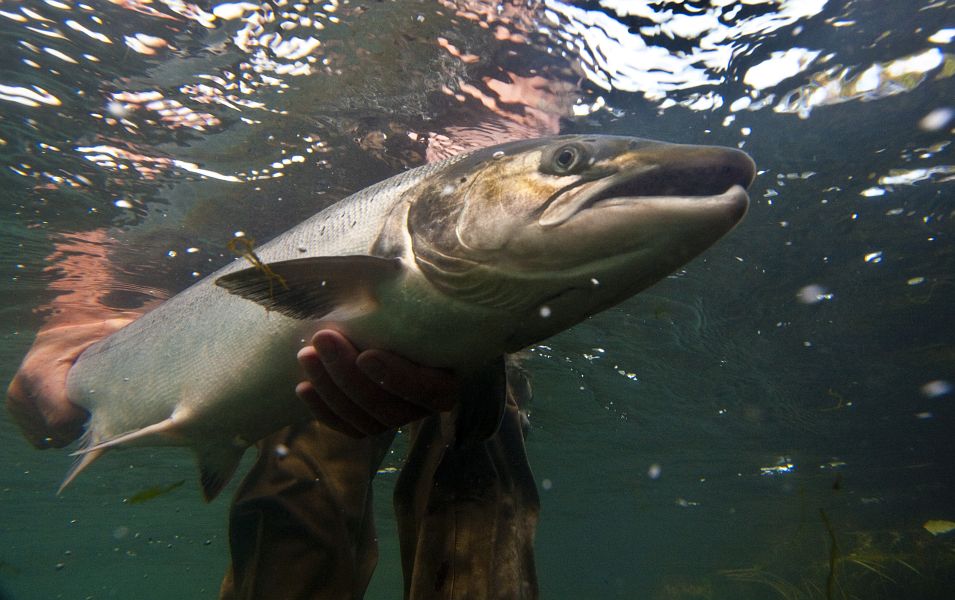
We used double-handed, 9-wt, 12 to 15 foot fly rods, floating lines with a section of lead-core sinking head attached to help the fly hit the bottom fast. We used tube flies threaded above treble hooks tied to 15 pound tippets around 3 to 4 feet long. Fly patterns were typically bright and colourful, the most popular being the Francis series (mainly in red as a shrimp imitation) and the hugely productive Sunrise Shadow, in essence a yellow and black streamer pattern with a little flash in it. They were variously weighted depending on the depth of the water in a particular reach.

The idea behind double-handed rods is to get distance on these big rivers using the elegant-looking Spey cast (when it’s done properly). It all makes perfect sense, but I think a single handed 9-wt would have suited me better and anyway I noticed the majority of the salmon I hooked took the fly close to the bank rather than out in the deep water.
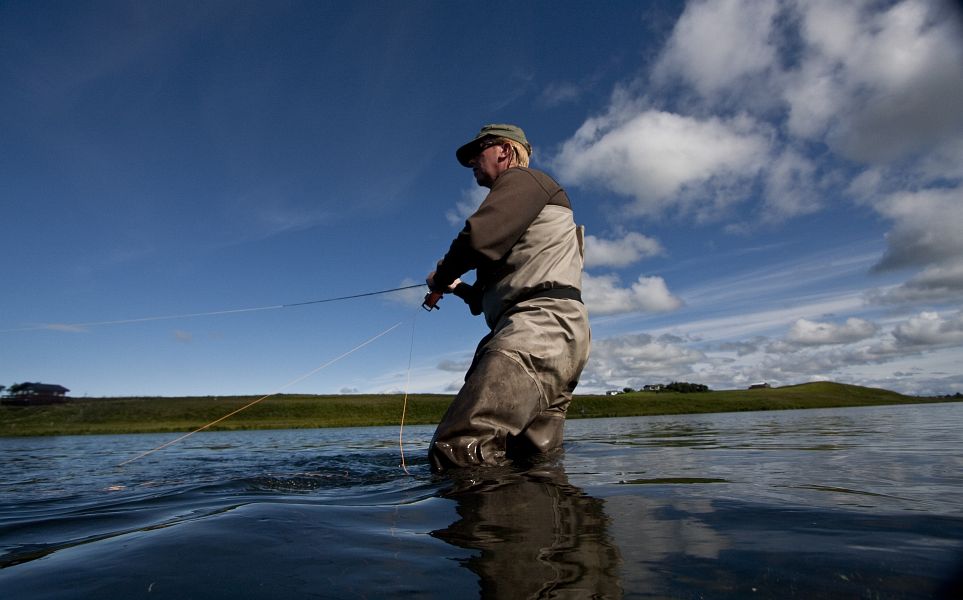
The general idea is to cast directly across the current, or slightly downstream, to mend immediately so you give the fly a nice long drag-free drift and time to sink, then at the end of the drift to check the rod and skate the fly up through the water. 75 percent of the fish I took hit the fly just before or just after it was checked and starting to lift. People spoke of using a retrieve, but Robin and I never did. We caught as many fish as most sticking with a dead drifted fly.
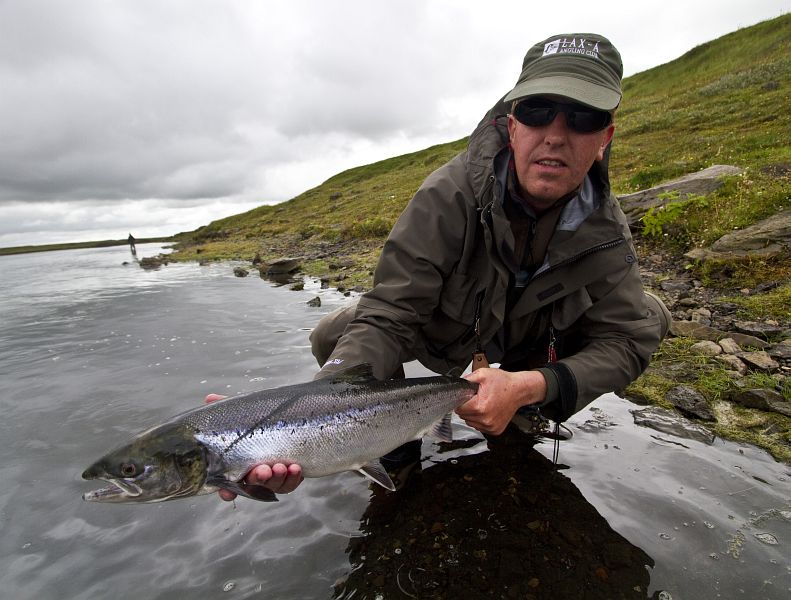
You don’t strike a salmon and it’s one of fly fishing’s more seductive mysteries as to how you ever hook one at all, the mystery lying in how it happens so suddenly and so easily. Imagine the fly in the drift, just the weight of the rod in your hand, the tip low and close to the water, the line running free with the current, light and loose, when suddenly the line gets ‘heavy’ and you haven’t done anything that was different. The heaviness, of course, is a salmon, though rarely the fly might have hung up in a clump of weed. The fight is always spectacular, the fish often cart wheeling out of the water. We got salmon between 7 and 15 pounds.
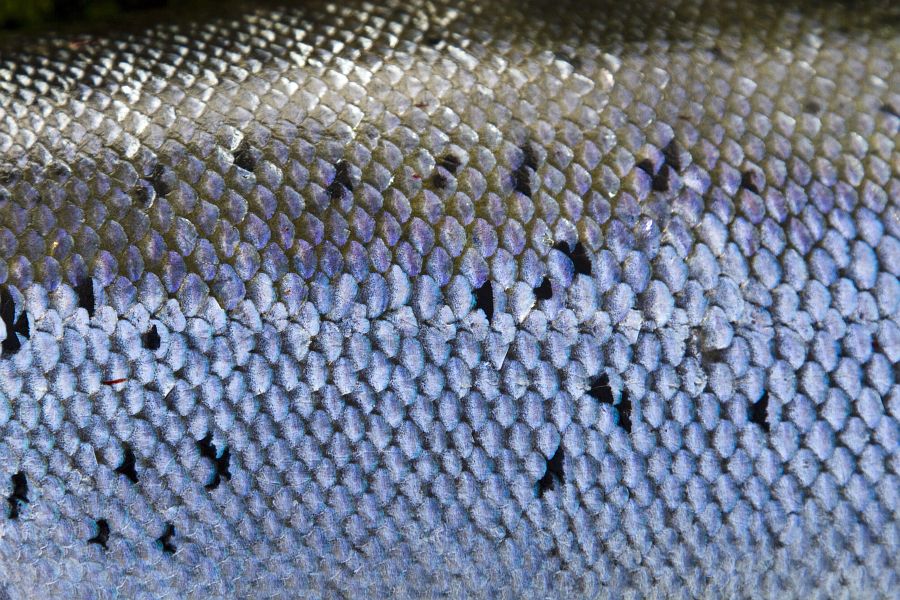
I guess you could say that one of the most electric things you could ever do in fly fishing is to catch a steelhead on a dry fly. But taking an Atlantic salmon on a free-drifting streamer is a close second, believe me.

In passing discussions with our guide Rikki, I began to realise that Iceland is also threaded with enough magnificent brown trout streams to easily put it in a league with New Zealand. Water clarity and size of fish are equally good, but the real advantage is that these are indigenous trout and you are also likely to catch a few extravagantly coloured Arctic char.
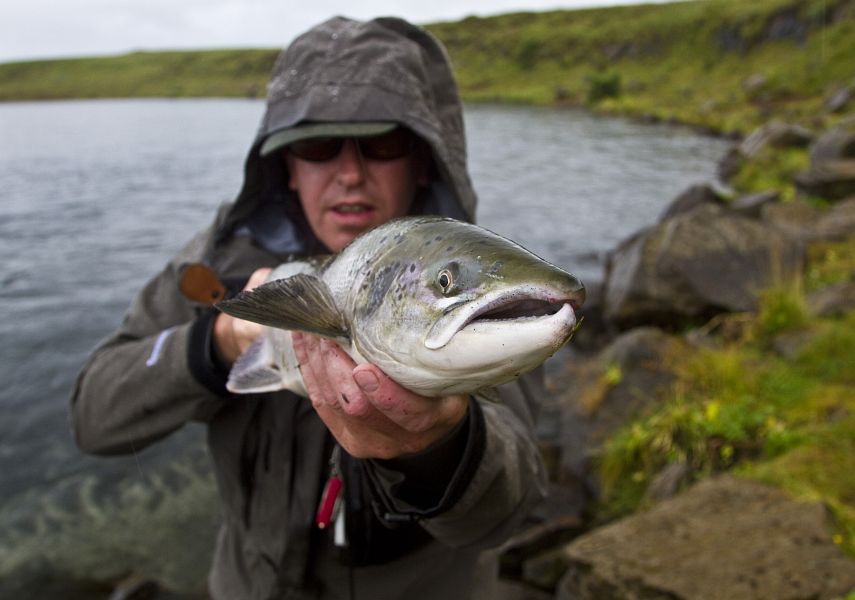
If you want to know more about the fishing opportunities in Iceland I suggest you contact Carsten Norgaard. He is the African agent for Laxa-A, lives in Namibia and his email address is This email address is being protected from spambots. You need JavaScript enabled to view it. . Great, great country to fly fish this.

Robin Renwick with guide, Rikki, West Ranga River
